Finding Godwits
In order to study the remarkable, long distance migratory Hudsonian Godwits (HUGOs), scientist Nate Senner must first find and catch them. As I accompany Nate and his team out to the peat bog in Beluga, Alaska, where the birds nest, I am continually impressed by their powers of observation. HUGOs are masters of disguise and nest among ground foliage. When feeling threatened, they hunker down and stay very still, camouflaged in the light and shadows.
While not sitting on eggs, male and female HUGOs take turns feeding out on the nearby tidal mudflats. Twice daily between tides, the birds can be observed exchanging places with each other. The field biologists patiently wait and watch for the birds and I paint.
When a bird does finally return from the mudflats and land, the biologists have an idea of where to start looking for nests. They can still be very hard to find-it takes an estimated 16 person hours to find one!
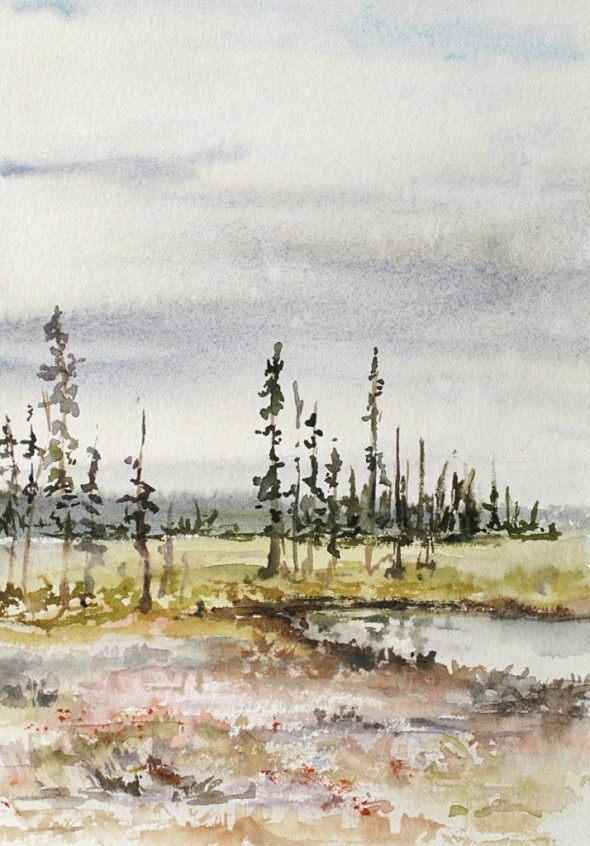
After locating a nest, its coordinates are noted on a GPS. The birds are usually agitated by the commotion, so they are left alone to calm down before the next step of catching them. More on that coming soon!
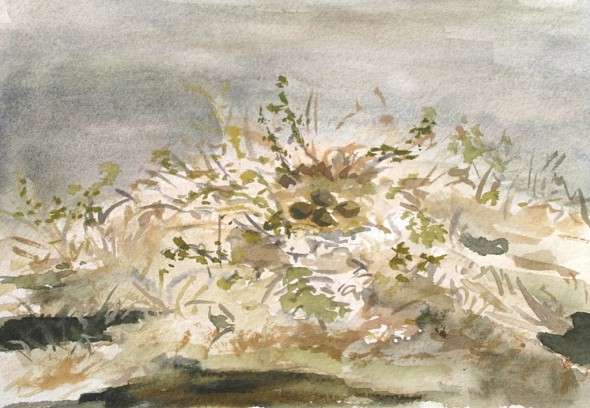
This is the fourth in a series of posts from the field. Read the next one or start at the beginning!
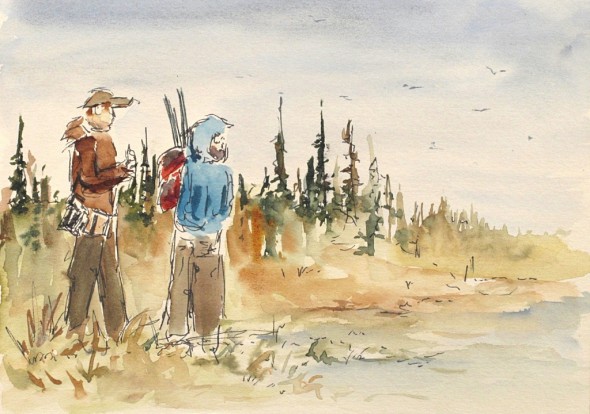
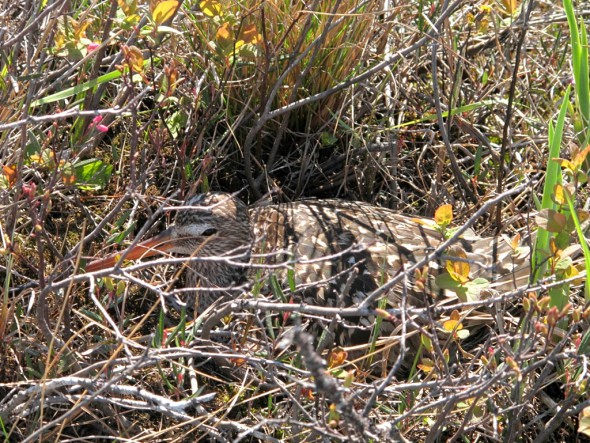
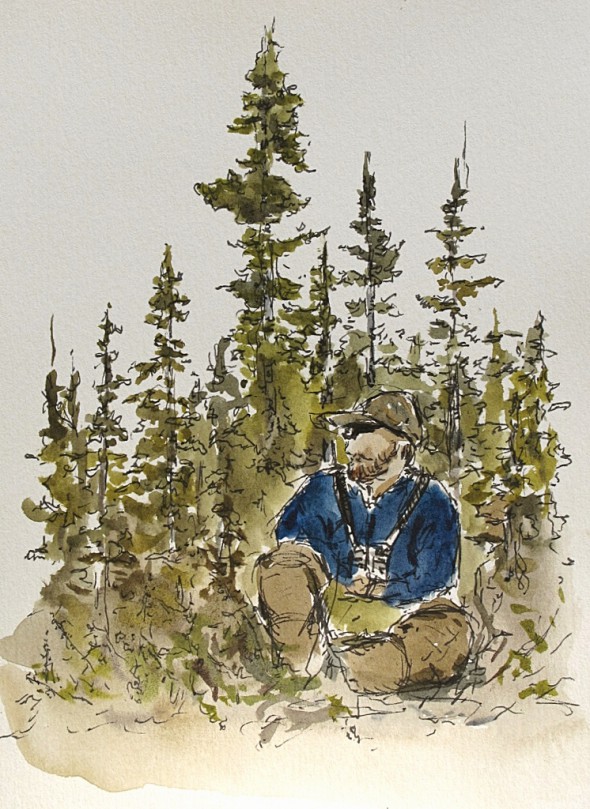
Leave a Reply